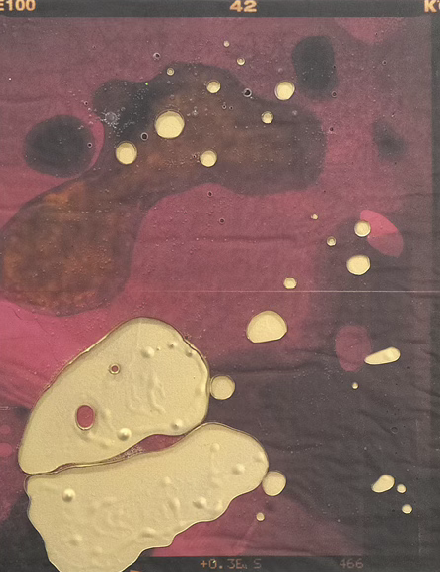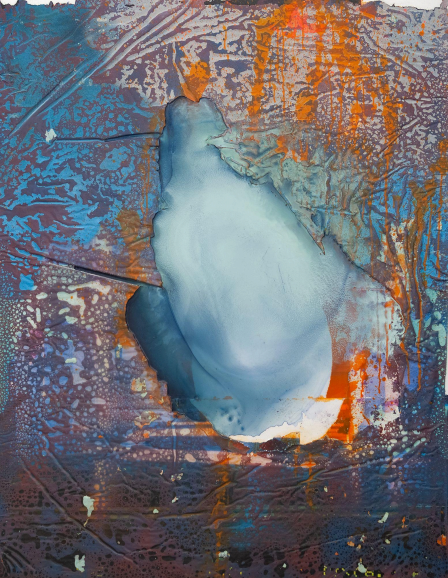
Some month some day
2025 Collage of pigmented dye-printed photo paper on corners followed by acrylic paint and synthetic resin (epoxy) 53 x 41.5 x 4 cm (10P)
Seoul’s Seongsu-dong, a district long associated with factories and workshops, has welcomed a new addition to its cultural landscape.
On September 15, NAMU Seoul, a newly opened art space, announced its inaugural exhibition: 'RESIDUE: Fragments of Existence, Time, Color, and Memory', a solo presentation by artist Inseong Park. Park, who studied in Nuremberg, employs a distinctive process of repeatedly filming and digitally scanning his works before reintroducing painterly tension into the surface.
Through this hybrid method, he visualizes the tension between analog and digital, material and data.
The exhibition interrogates “modes of recording and presence,” engaging with central discourses in contemporary art.
According to art critic Wonseok Ko (Director, Rhein Cultural Foundation), Park’s works echo themes found in AI cinema such as Her — particularly the blurred lines between emotional connection, artificial intelligence, and the fictional nature of data as a mirror of reality.
Drawing on the theories of Foucault and Benjamin, Park critiques the arbitrariness of archives and the entanglement of knowledge and power embedded in historical record-keeping.
His works reflect on how memory and documentation are shifting in the digital era, providing philosophical depth and unique insight into the accelerating digitalization of material life. Art critic Jinmyung Lee (PhD in Art Philosophy) has described Park’s practice as an embodiment of the “aesthetics of fragments,” noting his paradoxical stance that “a record is already destroyed the moment it is preserved.”
Through interactions of time, space, and being, Park allows interventions to remain as “conditions” while leaving the medium and environment to decide the rest. What emerges are traces, gaps, and residues — records of both presence and absence.

2025 Acrylic, epoxy resin over pigment printed paper on canvas 162.2 x 125 x 4 cm (100T)
With mom in the kitchen
The exhibition title Residue encapsulates this approach, evoking the remnants of vanished existence and time, reconstituted as signals and colors on canvas.
Significantly, the venue itself — a 1960s factory dormitory preserved in its original form — becomes part of the exhibition. Layers of memory embedded in the building’s walls merge with Park’s work, transforming the space into an archive in its own right.
The exhibition underscores how deliberate structures coexist with chance, revealing the generative possibilities of cracks, gaps, and residues.
It offers viewers a critical reflection on shifting materialities and forms of existence in a rapidly digitalizing world. NAMU Seoul is operated by A-rens, a curatorial group that has played an active role in international exchanges.
In May, A-rens co-curated artist Heekyung Jeon’s successful solo exhibition in New York’s Tribeca, paving the way for her participation at Untitled Art Fair Miami this December. With NAMU Seoul, A-rens aims to foster experimental and challenging practices while bridging Korea’s contemporary art scene with the global art world.

성수나무 (Namu Seoul)